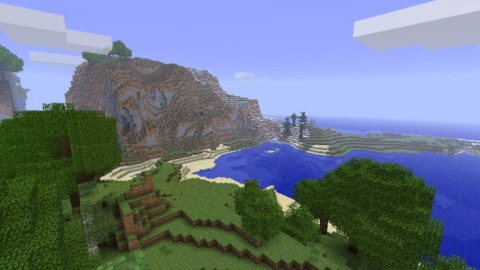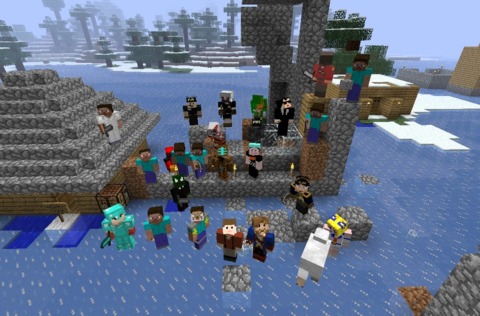Mining data from Minecraft
PAX 2011: Ph.D. student surveys players of Mojang's Minecraft, focuses on its phenomenal success and influence on gamer culture.
Who was there: Alex Leavitt, a Ph.D. student at the Annenberg School of Communication.
What he talked about: Minecraft has spread across the Internet like wildfire. Not as quick as this fire, but it was fast nonetheless. Because of the game's unique situation, Leavitt is using Minecraft as a focal point for his research on game culture. While the popularity of Mojang's game can be credited to platforms like YouTube, the panel wasn't about why Minecraft was popular, but rather was about how a game that has players punching trees has influenced game culture.

He explained that the phenomenon is not just about a game, but about the experience in the game and the emotional connection players form with the community that builds around them. Approaching the topic from a media studies communication perspective, Leavitt broke it down into three parts: popularity, community, and development. From there, he also touched on the topics of networks, platforms, and open source.
In a recent questionnaire, he was able to learn more about the Minecraft player. While 90 percent of the respondents were male, he acknowledged that this was not an accurate representation of the network at large. Regardless, he said it was interesting to see what heavily engaged players were doing with the game.
He also believed that open source is the future of game culture, citing Minecraft as an example. The ability to modify the game has given people reason to continue to play. He stated that only 20 percent of respondents have played Minecraft without the use of any mod.
With the help of YouTube, Minecraft went viral, and the popularity shot up quickly within just a few months. The developer, Markus "Notch" Persson, was making $250,000 a day from the fast sales. Leavitt described it as a global phenomenon, especially when looking at the demographic of players. Showing a chart that lists countries that are heavily invested in the game, it appears that Minecraft is most popular in Norway, Australia, and Denmark, with Sweden coming in fourth. The United States is in eighth.
Leavitt talked about how a network of players is not the same as a community and that Minecraft's popularity is due to the large network (with communities forming from within). There are players that are sharing information on the Web via the Minecraft wiki, as well as other groups who share walkthroughs, tours, and other videos on YouTube. Information sharing is big, according to Leavitt, and an example that was used was Fallout: New Vegas. Within a week of release in 2010, New Vegas had a wiki built by 2.5 million users who collectively invested thousands of hours.

According to Leavitt's survey sample, one-third of the participants had heard about Minecraft through friends, and another third learned about it by watching online videos. The visibility of the game increased due to this network that was connected on YouTube. The video sharing site was a commentary center and helped popularize the game by allowing players to share solutions, walkthroughs, and house tours. In August of 2010, there were roughly 4,000 videos about Minecraft on YouTube. As of today, roughly 1.9 million videos appear during a search for the game.
Leavitt noted that by letting players do what they want by modifying the game, Notch essentially has millions of play testers. It also extends the longevity of the game for people because they can play it any way they want to.
To wrap up the panel, Leavitt summarized that the future of game culture is about participation. By participating in the network, whether it's done by creating mods or broadcasting videos, users will ultimately shape the experience of the game.
Takeaway: Minecraft's popularity was due to multiple factors. The emerging game culture (video sharing, wikis, modding) that surrounds Minecraft ultimately helped make the game as popular as it is today.
Got a news tip or want to contact us directly? Email news@gamespot.com
Join the conversation